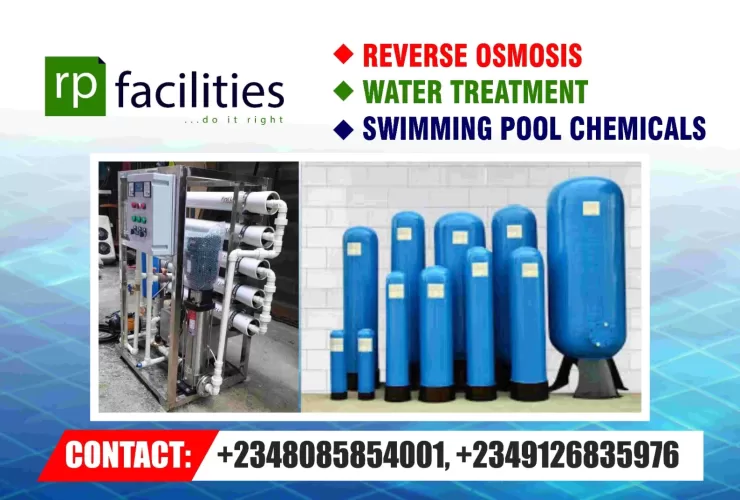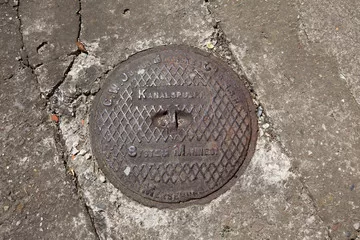My Reverse Osmosis Membranes Were Clogged
In the bustling area of Ikate, Lekki, Lagos, a homeowner named Sarah faced a frustrating dilemma: her reverse osmosis membranes were clogged after just three months of installation. Despite having barely used the system, her technician reported that it had become non-functional. Feeling overwhelmed and confused, Sarah reached out for help, dialing 08085854001, the contact number she had saved for emergencies related to her water system. This is the story of Sarah’s journey to resolve her RO issues and the practical steps she learned along the way.
The Call for Help – My Reverse Osmosis Membrane Was Clogged After 3 Months of Installation
One sunny afternoon, Sarah picked up her phone and dialed 08085854001, the number she had saved for emergencies related to her water system. “Hello, this is RP Water Facilities,” answered a friendly voice. Sarah explained her predicament, detailing how her RO system, which she had barely used, was now out of commission.
“I can’t believe this is happening,” she lamented. “I thought I was making a smart investment for my family’s health, but now I’m left with clogged membranes after just three months!”
The representative on the other end assured her that she was not alone and that many customers faced similar issues. They scheduled a visit to assess the situation and guide her through the steps to unclog her reverse osmosis membranes.
Understanding Reverse Osmosis Systems
Before diving into the solution, it’s essential to understand what a reverse osmosis system is and how it works. An RO system uses a semi-permeable membrane to remove contaminants from water, ensuring that you get clean drinking water free from impurities. However, various factors can lead to clogging of the membranes, including:
- High TDS Levels: Total Dissolved Solids (TDS) in the water can lead to scaling on the membranes.
- Poor Pre-Filtration: If sediment and carbon filters are not functioning properly, larger particles can reach the membranes.
- Microbial Growth: Bacteria and other microorganisms can grow in the system, leading to biofouling.
- Chemical Contaminants: Certain chemicals can react with the membrane material, causing blockages.
Understanding these factors can help in taking proactive measures to maintain the system.
The Technician’s Visit
When the technician from RP Water Facilities arrived at Sarah’s home, he was prepared to diagnose the issue. After a thorough inspection, he discovered that the pre-filters had not been changed as recommended, leading to excessive pressure on the RO membranes. He explained to Sarah the importance of regular maintenance and filter replacement to prevent such issues.
Step-by-Step Guide to Unclogging a Reverse Osmosis Membrane
- Turn Off the System: Safety first! Ensure the RO system is turned off and the water supply is disconnected.
- Inspect Pre-Filters: Check the sediment and carbon filters. If they are dirty or clogged, replace them immediately. These filters are your first line of defense against contaminants.
- Flush the Membrane: Some membranes can be flushed with a cleaning solution. The technician used a specialized RO cleaning solution to remove any accumulated contaminants.
- Soak the Membrane: In cases of severe clogging, soaking the membrane in a cleaning solution for a few hours can help dissolve stubborn deposits.
- Rinse Thoroughly: After soaking, rinse the membrane thoroughly with clean water to remove any residual cleaning solution.
- Reassemble and Test: Once the membrane is cleaned and rinsed, reassemble the system, turn it back on, and test the water quality.
- Regular Maintenance: The technician emphasized that regular maintenance is crucial. Schedule routine checks every six months and replace pre-filters as needed.
Recommended Cleaning Agents for Calcium Hardness on RO Membranes
- Citric Acid:
- Effective for dissolving calcium deposits.
- Use: 1-3% solution.
- Sodium Bisulfate (Dry Acid):
- Effective for removing mineral scales.
- Follow manufacturer instructions for dilution.
Cleaning Procedure
- Soak the membrane in the cleaning solution for 4 to 6 hours.
- Flush thoroughly with clean water afterward.
Safety Precautions
- Wear gloves and eye protection.
- Ensure proper ventilation during cleaning.
These agents can effectively restore the performance of your RO membrane by removing calcium deposits.
Sarah’s Experience
After following the technician’s guidance, Sarah was amazed at the difference. The water flow was restored, and the taste was better than ever. She realized that the clogging issue could have been prevented with regular maintenance and timely filter changes.
“I feel relieved!” Sarah exclaimed. “I didn’t realize how crucial those pre-filters were. I thought I could just set it and forget it. Now I know better!”
Why Regular Maintenance Matters
Sarah’s experience highlights the importance of regular maintenance for reverse osmosis systems. Here are some key reasons why you should prioritize maintenance:
- Prolongs System Life: Regular checks and filter replacements can extend the lifespan of your RO system.
- Ensures Water Quality: Maintaining your system ensures that you consistently receive clean, safe drinking water.
- Saves Money: Preventing issues before they escalate can save you from costly repairs and replacements.
Common Questions About Reverse Osmosis Membranes
- How often should I replace my RO filters?
- It’s recommended to replace pre-filters every 6-12 months, while the RO membrane typically lasts 2-3 years, depending on usage and water quality.
- What are the signs that my RO membrane is clogged?
- Signs include reduced water flow, poor water quality (taste or odor), and reduced clean water pressure from the RO system.
- Can I clean the RO membrane myself?
- While some cleaning can be done at home, it’s best to consult a professional to avoid damaging the membrane.
Conclusion: Empowering Yourself with Knowledge
Sarah’s journey from frustration to resolution is a testament to the importance of understanding and maintaining your reverse osmosis system. If you find yourself in a similar situation with clogged reverse osmosis membranes after just three months of installation, remember that help is just a phone call away.
At RP Water Facilities, we are dedicated to providing you with the knowledge and support you need to keep your water systems running smoothly. Regular maintenance and timely interventions can make all the difference in ensuring that your investment in clean water pays off.
If you’re experiencing issues with your RO system or have any questions, don’t hesitate to reach out to us at 08085854001. Together, we can ensure that your family enjoys the benefits of clean, safe drinking water for years to come.



